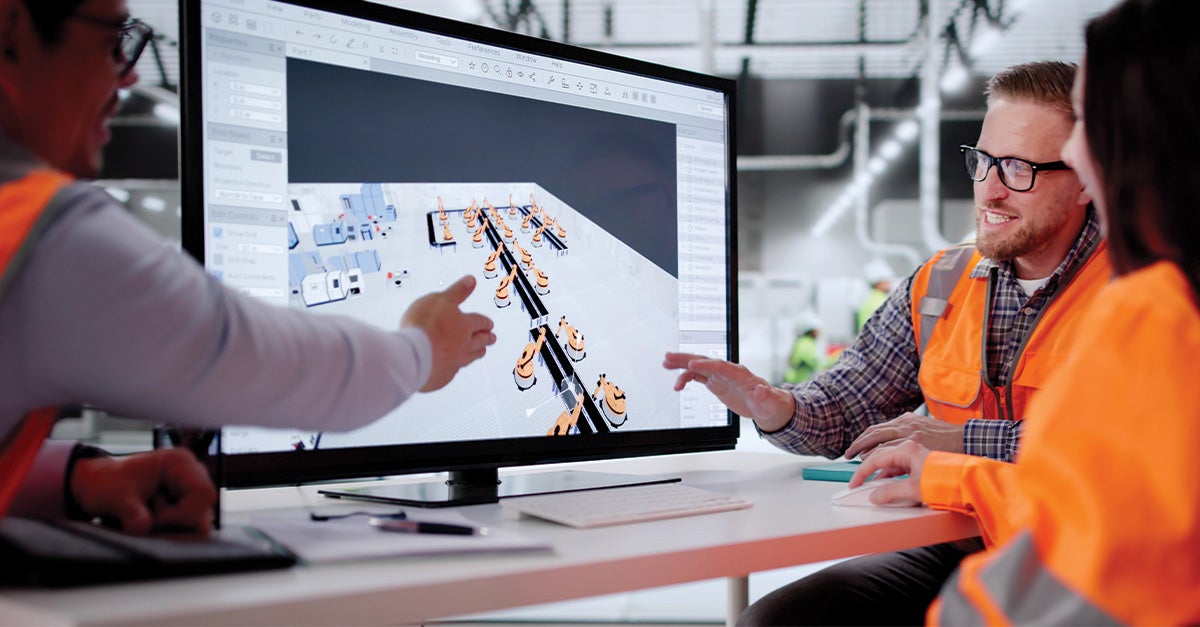Considerations, consequences, and courses of action
Let’s begin at the beginning: the design phase. Roughly 70 percent of the total cost of a product is determined up front. Decisions made during this crucial period lock in everything from materials, components, and suppliers to tooling and tolerances. Beyond functionality, cost, and availability, it stands to reason that design engineers should look at their options through a supply chain lens, too. If Preferred Option A is suddenly unavailable, what’s Option B? And Option C?
To build resilience into your supply chain from the outset, here are six questions every product development team should be asking:
- Is your bill of materials (BOM) dual-sourced?
The answer should always be “yes.” Over-reliance on a single anything can end up being exhausting, expensive, or even catastrophic when reliable delivery is interrupted. Building flexibility into the BOM with approved alternates for materials, parts, and assemblies reduces the time it takes to source substitutes when access to a preferred supplier is compromised.
- Is functionality tied to specific materials or components?
Even if critical materials and components are available now, that doesn’t mean they’ll be easy to get your hands on later. Buffer inventory and regional fulfillment hubs safeguard against shortfalls and supply chain disruptions. If your product is designed for long-term use, repairability and spare parts accessibility should be part of the equation, too. Weigh functionality vs. feasibility thoughtfully.
- What is the lead time on extended-build components?
Understanding supply and demand cycles can go a long way in streamlining the flow of materials — and so can avoiding hard-to-source components altogether. If a component will take months to get, how does that affect your ability to scale or pivot?
- Are obsolescence or end-of-life (EOL) looming?
Relying on components near EOL can lead to redesigns, inflated costs, and grey market risks. Stay aligned with manufacturers’ roadmaps and phase-out timelines. The goal: no surprises.
- Have suppliers been vetted beyond cost and specs?
Go beyond a technical appraisal of products and services. Financial stability, environmental concerns, and geopolitical risk factors should be put under the microscope, too. What affects them affects you.
- What risks could shipping and freight pose?
Maintaining a predictable flow of materials and finished goods requires the ability to anticipate, adapt to, and recover from supply chain disruptions. Design decisions should support diversification — ports, carriers, and transportation modes — to mitigate disturbances, minimize delays, and optimize routes for lower freight costs. Furthermore, don’t just think outside the box — think about the box. Give serious consideration to dimension, weight, and regional import restrictions. All affect cost.
Design for supply chain resilience with Flex
A “what happens if…” mindset is powerful, but it can be paralyzing. Engaging an experienced partner before production begins is a risk mitigation strategy in and of itself. It’s also a competitive advantage. The right supply chain partner can bring critical insight into material choices, supplier diversification, and inventory strategies that prepare you for the unknown and help you balance the profitable, proactive, and pragmatic.
Real-world example: Early supply chain decisions have long-term financial consequences
Without a cohesive inventory strategy, a Flex customer found itself seeking relief from excessive costs after being saddled with upwards of $400K per month in premium freight and broker fees. After taking them through a comprehensive risk assessment, we helped them implement a regional inventory hub model to lower costs, mitigate risk, and manage fluctuating demand. Asking the right questions was critical — had the customer engaged earlier during the design phase, they could have saved up to $5 million in cumulative costs. For them, and so many others, this represents the cost of waiting.
At Flex, every manufacturing engagement starts with a design-centric supply chain review. Is it optimized for production and distribution? Is it adaptable in the face of supply chain disruptions? We assess resilience, manufacturability, and distribution feasibility before production begins, because it’s far better (and easier) to prevent disruption than to scramble to contain it.
With extensive experience, advanced capabilities, and a breadth of technical and supply chain services at the ready, we take customers from concept through production seamlessly. Our global footprint allows you to regionalize effectively for the fastest time to market. Regional hubs in Hong Kong, Hungary, and Mexico enable you to move materials strategically and make critical inventory readily available, whether stocking in-region or moving components as demand dictates. The ability to access manufacturing, inventory, and engineering expertise across 100-plus locations in 30 countries allow you to adapt to the unforeseen without missing a beat.
Start building supply chain resilience into your design decisions with Flex






